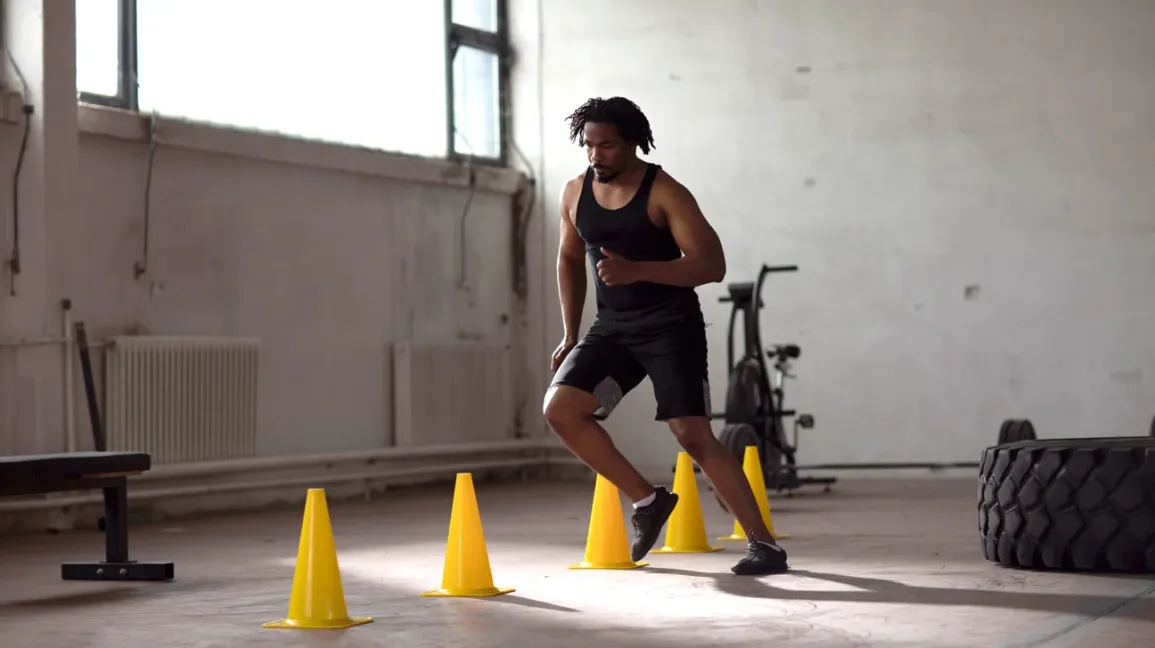Muscle Control: The Ability to Quickly Change Directions and Make Complex Movements
Muscle control is the ability to quickly change directions and make complex movements. It is a crucial aspect of physical performance, particularly in sports and activities that require agility, flexibility, and coordination. In this comprehensive article, we will delve into the intricacies of muscle control, exploring its importance, underlying mechanisms, and practical applications.
What is Muscle Control?
Muscle control is the ability to quickly and precisely change the direction and speed of a movement. It involves the coordinated contraction and relaxation of muscles to achieve specific movements, such as changing direction, accelerating, or decelerating. This ability is essential for activities that require quick reflexes, such as sports, dance, or martial arts.
Importance of Muscle Control
- Enhanced Performance: Muscle control enables athletes to perform at their best by allowing them to quickly adjust their movements in response to changing situations.
- Improved Safety: Muscle control helps prevent injuries by allowing athletes to react quickly to unexpected events, such as a sudden change in direction or an opponent’s move.
- Increased Flexibility: Muscle control enables athletes to perform complex movements, such as twists, turns, and jumps, which are essential for many sports and activities.
- Enhanced Coordination: Muscle control helps athletes coordinate their movements, ensuring that their actions are precise and efficient.
Underlying Mechanisms of Muscle Control
- Muscle Contraction: Muscle control relies on the coordinated contraction and relaxation of muscles. This involves the activation of specific muscle fibers and the timing of muscle contractions.
- Neural Control: The central nervous system plays a crucial role in muscle control. It sends signals to the muscles, controlling their contraction and relaxation.
- Muscle Memory: Muscle control also involves muscle memory, which is the ability of muscles to remember and repeat specific movements.
Practical Applications of Muscle Control
- Sports: Muscle control is essential for sports that require quick reflexes, such as basketball, soccer, and tennis.
- Dance: Muscle control is crucial for dancers, who need to perform complex movements with precision and coordination.
- Martial Arts: Muscle control is vital for martial artists, who need to respond quickly to opponents’ moves and perform complex techniques.
- Rehabilitation: Muscle control is also important for rehabilitation, as it helps patients recover from injuries and regain their physical abilities.
How to Improve Muscle Control
- Practice: Regular practice is essential for improving muscle control. Athletes and dancers should focus on specific movements and exercises to improve their control.
- Strength Training: Building strength in the relevant muscle groups can improve muscle control. This involves exercises such as squats, lunges, and deadlifts.
- Flexibility Training: Improving flexibility can enhance muscle control by allowing for greater range of motion and more precise movements.
- Coordination Exercises: Exercises that focus on coordination, such as balance exercises and agility drills, can help improve muscle control.
Conclusion
Muscle control is a critical aspect of physical performance, enabling athletes and dancers to perform complex movements with precision and coordination. By understanding the underlying mechanisms and practical applications of muscle control, individuals can improve their physical abilities and achieve their goals.
FAQ
- What is muscle control?
- Muscle control is the ability to quickly change directions and make complex movements, involving the coordinated contraction and relaxation of muscles.
- Why is muscle control important?
- Muscle control is important for enhancing performance, improving safety, increasing flexibility, and enhancing coordination.
- How does muscle control work?
- Muscle control relies on muscle contraction, neural control, and muscle memory. The central nervous system sends signals to the muscles, controlling their contraction and relaxation.
- What are the practical applications of muscle control?
- Muscle control is essential for sports, dance, martial arts, and rehabilitation.
- How can I improve my muscle control?
- Practice, strength training, flexibility training, and coordination exercises can help improve muscle control.
- What are the benefits of improving muscle control?
- Improving muscle control can enhance physical performance, improve safety, increase flexibility, and enhance coordination.
The Role of the Nervous System in Muscle Control
The nervous system plays a crucial role in muscle control, as it is responsible for sending signals from the brain to the muscles, coordinating their contraction and relaxation.
- Central Nervous System: The central nervous system, which includes the brain and spinal cord, is responsible for processing sensory information and generating motor commands.
- Motor Neurons: Motor neurons are the nerve cells that transmit signals from the central nervous system to the muscles, triggering muscle contraction.
- Neuromuscular Junction: The neuromuscular junction is the point where the motor neuron meets the muscle fiber, allowing for the transmission of the electrical signal that triggers muscle contraction.
- Feedback Loops: The nervous system also receives feedback from the muscles, allowing for the fine-tuning of muscle control and the adjustment of movements in real-time.
The Role of Muscle Fibers in Muscle Control
The composition and properties of muscle fibers also play a crucial role in muscle control.
- Muscle Fiber Types: There are two main types of muscle fibers: slow-twitch (type I) and fast-twitch (type II) fibers. Slow-twitch fibers are better suited for endurance activities, while fast-twitch fibers are better suited for explosive movements.
- Muscle Fiber Recruitment: The nervous system selectively recruits different muscle fibers based on the demands of the movement, with fast-twitch fibers being recruited for quick, powerful movements and slow-twitch fibers being recruited for sustained, low-intensity activities.
- Muscle Fiber Plasticity: Muscle fibers can adapt to the demands placed on them, with training leading to changes in the relative proportions of slow-twitch and fast-twitch fibers.
Relevant Information
| Topic | Link |
|---|---|
| Muscle Control | https://www.ncbi.nlm.nih.gov/pmc/articles/PMC4764444/ |






More Stories
Where to Watch USMNT vs Jamaica National Football Team
How I Met My Monster
How Should a Ring Fit